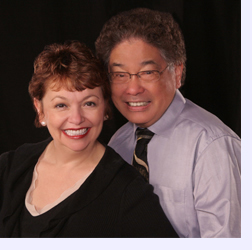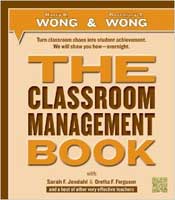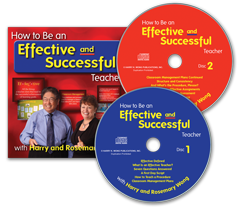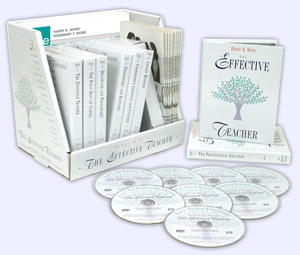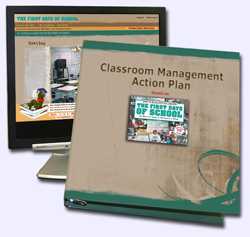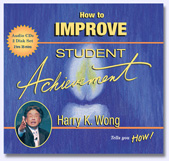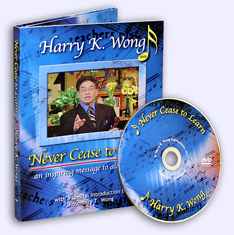|
 |
|
| |||||||||||||||
| by Harry & Rosemary Wong Special to the Gazette January 2011 |
|||||||||||||||
Effectiveness Defined: It’s Not a Mystery Eleven states and the District of Columbia have been chosen to receive Race to the Top funds to create a nation of effective teachers that will produce student achievement. What will happen to the teachers and children in the remaining states and US Territories? Take heart. Effective teaching is identifiable, teachable, and implementable. You do not need massive funds to develop and retain effective teachers and principals. For over 25 years, we have consistently underscored a single point: To produce student achievement, produce effective teachers! The notion seems so common sense, yet it took billions of dollars donated by high powered, nonprofit foundations to fund years of research to come to the startling conclusion: It is the teacher that makes the difference in the classroom.
Race to the Top (RTT) has funded $4.35 billion to spur reforms in state and local K-12 districts to produce effective teachers and principals. RTT funds are not to be used to buy programs, change the structure of the school, or to implement a philosophy or ideology. RTT mandates states must have comprehensive, coherent, educational reform statewide across four areas:
Recruiting, developing, and retaining effective teachers and principals will supersede and will drive the success of the other three areas. For there to be “winners” in the Race to the Top mandate, Effectiveness Is Identifiable Effectiveness can be identified and defined. The key component of this sentence is effective. ef ▪ fec’ ▪ tive: Teachers who are effective produce student learning, growth, and achievement.
The Three Characteristics of Effective Teachers Over 30 years of research have identified the three characteristics of effective teachers and school leaders have used these characteristics to professionally develop teachers who can improve student learning. The research is in the afore mentioned report, Developing and Retaining Effective Teachers and Principals.These are the three most important characteristics of effective teachers:
With effectiveness defined, a district can use the three characteristics of effective teachers as the framework for an effective professional development program to train teachers to be effective. Effectiveness Is Teachable Professional development is the logical strategy for teaching teacher effectiveness. School districts that are serious about training, supporting, and retaining effective teachers have a comprehensive, coherent, and sustained teacher development program. Strong professional development programs send a solid message to the teachers:
Strong professional development programs send a solid message to the community:
Professional development is a continuum of planned activities designed to raise the skill level of teachers. Professional development is a way to induct teaches into the culture, mission, academic standards, and vision of the district. A strong professional development program must be
Islip School District – Long Island, New York In the Islip School District, more than 99 percent of the graduating senior class receive a New York Regent’s Diploma. They attribute their students’ achievement gains to how they develop and train all teachers new to their district. This training brings the teachers up to speed with other teachers in the district who have already gone through the process. Components of the Islip New Teacher Training Program
But it’s better to train and lose that teacher, The major component of the Islip program is the collaborative study group activities and the networking that happens as a result of working together. Study teams focus on skill-building strategies such as conducting parent conferences, managing classrooms, crafting lesson plans, and implementing cooperative discipline programs. The groups constantly work on team-building and problem-solving techniques. They use model lessons and hold sharing sessions in which teachers learn from each other and build respect for one another. The Islip program not only retains highly qualified teachers, but it also ensures that these teachers are teaching effectively from the very first day of school and through their tenure in the district. And the test scores at the district validate the effectiveness of the teachers. John Christie, social studies teacher, says, “At Islip, the New Teacher Induction Program allowed me to share new teacher concerns, realize I wasn’t alone, and discover solutions in a collegial environment.” Lorraine Knoblanch, a new teacher, says, “The best part of this year was how our relationships with the other teachers developed. We really have developed into a family. We share concerns and triumphs and meet after school on many occasions. The connections are invaluable.” New teachers are immediately ushered into a team culture and teacher turnover in the Islip Public Schools is negligible. Click here to learn more about the Islip New Teacher Induction Program. Islip is not the only district in the country training effective teachers. Their program was developed after Linda Lippman and a team from the district visited the “mother” of all new teacher training programs at the Flowing Wells School District in Tucson, Arizona. Click here to read more about this remarkable program that has been in existence for over 25 years. When Yvonne Bernino reluctantly left teaching in the Flowing Wells School District, she paid them a profound compliment. She said, “They taught me how to teach.” The Hopewell School District in Virginia has another model of a comprehensive professional development program. Click here to read about it. All of these programs have been installed for years—long before Race to the Top was a twinkle in the government’s eye. Training for teachers must start from day one and continue throughout their professional careers. Building a cadre of effective teachers is the charge of the school district. Professional development, beginning with a new teacher induction program, is the most successful strategy school districts have to strengthen the effectiveness of its teachers and principals. Effectiveness Is Implementable Implementation is the key to success. A school or school district will only succeed if a professional development program to develop effective teachers and principals is implemented and sustained. The key component of this sentence is sustained. The major worry is that school districts will take their Race to the Top money, hire an outside agency or company to spend the money, yes spend, not develop effective teachers, and when the money is spent, the district will revert back to where it was before Race to the Top. Successful school districts stress effective practices. They wisely invest in their teachers and the effectiveness of their teachers. They have a continuing professional development process, prioritizing the instructional practices of their teachers and their principals as instructional leaders because they are the major factors in improving student achievement. Funds spent developing teachers in the skills to guide children to achievement are better spent than money used to buy a package of neatly presented quick fixes for academic woes. Educational leaders know that an effective teacher can never be replaced by a program. Effective teachers raise the achievement level of children. In too many districts a new teacher is hired, given a handbook and a schedule, and told, “Go to it.” A barista at Starbucks gets much more training than most teachers get. If a teacher is ineffective, it is not the fault of the teacher. Organized, goal-oriented, lifelong professional develop must be implemented—and Race to the Top funds has nothing to do with it. But if you are in a district that has received the funds, use the money to establish the workings of an effective professional development plan for the district so it becomes the backbone of your teachers’ and students’ success for decades to come. The primary and paramount purpose of a teacher is to teach. The purpose of the leadership at the school and the professional development program at the school district is to develop teachers who can teach—who can raise the level of student achievement. Home Grown Effective Teachers There is an abundance of talent within your school district and schools to professionally develop your own teachers. Effective teachers will tell you they do not teach out of a textbook or from a company’s program. Rather, they use a multitude of resources to teach the lesson objectives. Likewise, effective school districts do not hire outside agencies or companies to manage their professional development. Can you imagine a sports team hiring an outside company to manage and coach their team? For the past 10+ years, our Effective Teaching column on this website have been devoted to showcasing effective teachers, principals, schools, and school districts. Review these articles and steal from them what it takes to be effective. All of the materials we produce—from the books, DVDs and CDs, to our eLearning course—all focus on creating effective teachers. Notice that the word effective is in or implied in all of the titles. Effectiveness is our mission and our forté. We’d love to share with others what you are doing in your school or district to create effective teachers. Please write to us at RWong@HarryWong.com and allow us to share your story with others on our Effective Teaching column. Every day that a child spends in the classroom of an ineffective teacher is a travesty to the child and to the profession. Effectiveness is not a mystery. It is definable and more importantly, implementable—without any additional funds. Everything that an effective teacher does in the classroom does not cost 1¢ to put into practice. No additional textbooks are needed; no special equipment is required; no special government funds are necessary. To be an effective teacher is the goal of every professional educator. Our children deserve nothing less.
|
|||||||||||||||
|



